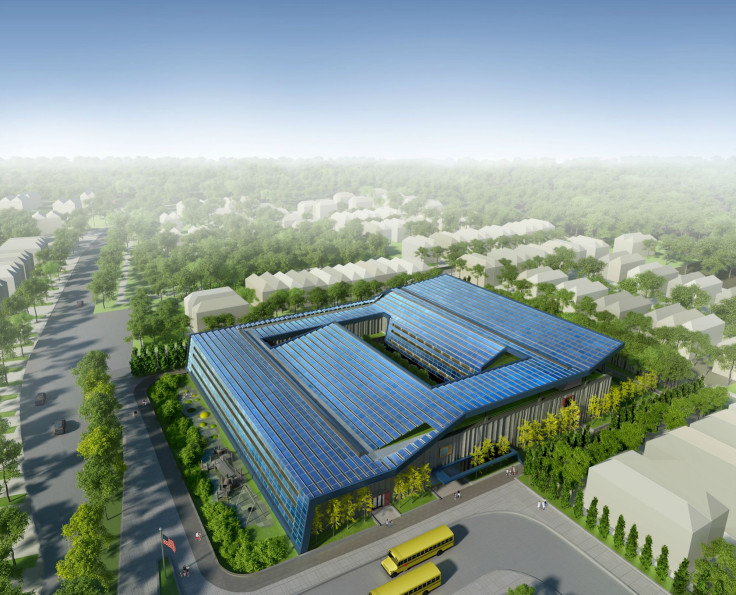Building New York: SOM Reshapes Roosevelt Island
Last July, Mayor Bloomberg announced a request for proposals to develop a science and engineering campus at Roosevelt Island, Governors Island or the Brooklyn Navy Yard, kicking off a furious competition between some of the country's top schools. Cornell University, along with partner Technion -- Israel Institute of Technology, emerged triumphant in December, thanks in part to a $350 million gift.
But equally crucial was an intense three-month design process, led by Roger Duffy, a partner of Skidmore Owings & Merrill (SOM) and founder of its Education Lab. Skidmore Owings & Merrill connected with Cornell through a mutual contact, who was also involved with SOM's work at the New School's new academic building at 65 Fifth Avenue in Manhattan.
After considering the financials and choosing Roosevelt Island as a target, Cornell moved foward and hired SOM, and the architects and school officials began assembling a plan. But first, they had to identify the goals of the project.
We acted as a kind of conduit in collecting all their objectives, said Duffy.
A central idea was that of hubs -- instead of having a complex of closed-off silos, SOM's plan incorporates walkways between buildings that make lateral paths. The buildings are grouped around associated disciplines, such as a health hub, which will include biomedical and engineering fields, and a mobile social hub, which will including mobile technology and social marketing studies. The hubs are expected to expand or be replaced as the complex develops, so flexibility in the structures is key.
Another major goal for SOM was high environmental sustainability. The complex is designed to be zero net energy, producing as much energy as it consumes. That ethos dictated everything from the buildings' position in relation to sun to a slew of green features.
You really have to design from the conceptual stage, said Colin Koop, an associate director at SOM. When you have that kind of aggressive idea, you have to design your orientation of the campus around it.
The current design calls for 150,000 square feet of photovoltaics to capture the sun's energy, as well as underground geothermal wells to produce additional power. Further options include a cogeneration plant and use of the tidal energy from the East River. The site is also expected to incorporate a blackwater system, which re-uses water by treating it with bacteria to break down its toxins.
When envisioning the site, SOM benefitted from the experience of designing one the first zero net energy buildings in the Northeast: P.S. 62, a 70,000 square foot school in Staten Island that was approved by the City Council in December. Along with the New School building, P.S. 62 seeks to maximize natural light, and a similar approach occured at Roosevelt Island.
Duffy's team also drew on its work on the campus of St. Albans School, a private boys' school near Washington, D.C., which integrated walkways into surroundings designed by landscape architect Frederick Law Olmsted, Jr., the son of the co-designer of Manhattan's Central Park. The interior and exterior paths connect campus buildings and provide views for pedestrians, similar to the walkways that will connect Cornell's hubs.
While Roosevelt Island is sparsely developed by New York standards, the design for the new campus seeks to engage three communities, said Duffy, creating gathering points for the students, relating to the Roosevelt Island neighborhood and relating to the city as a whole. Adjacent to the exterior walkways will be courtyards and retail, designed in partnership with landscape architect James Corner Field Operations. Public space will form pedestrian access, with a focus on the western side, and Duffy hopes the complex will complement the Franklin D. Roosevelt Four Freedoms Park to the south and the denser buildings to the north, although some residents have expressed concern over the planned demolition of the Goldwater Hospital, which sits on the site.

Skidmore Owings & Merrill, founded in 1937, has a traditional of soaring corporate office towers, including the Lever House and One Chase Manhattan Plaza in Manhattan, and the Willis Tower (formerly the Sears Tower) in Chicago. It is also active internationally, designing the Burj Khalifa in Dubai, currently the tallest building in the world, and towers throughout Asia.
But Duffy, who eschews the influence of one style or architect, is attracted to complex sites rather than purely commercial properties, having worked on transit projects and master planning. Since joining the firm in 1985, he has helped diversify SOM's work and pushed for better design, creating the SOM Journal, an annual review of the firm's work from outside architecture critics.
We approach every problem in a very open-minded way, said Duffy, who cites the philosophy of the landscape artist Michael Heizer of trying to expose the potential of the site, rather than imposing his own preconceptions. His other current projects include a new terminal at LaGuardia Airport and a new structure at the Air Force Academy in Colorado Springs to complement SOM's Cadet Chapel.
The Cornell campus will be a long-term process, and the university still needs to gain approval for the project through the seven-month Uniform Land Use Review Procedure (ULURP). If approved, the 200,000 square foot first phase is planned for completion in 2017 and the entire site is to be finished by 2037. Until then, SOM will delve into the details, ranging from construction materials to pedestrian site access. Their work is just beginning.
© Copyright IBTimes 2024. All rights reserved.











